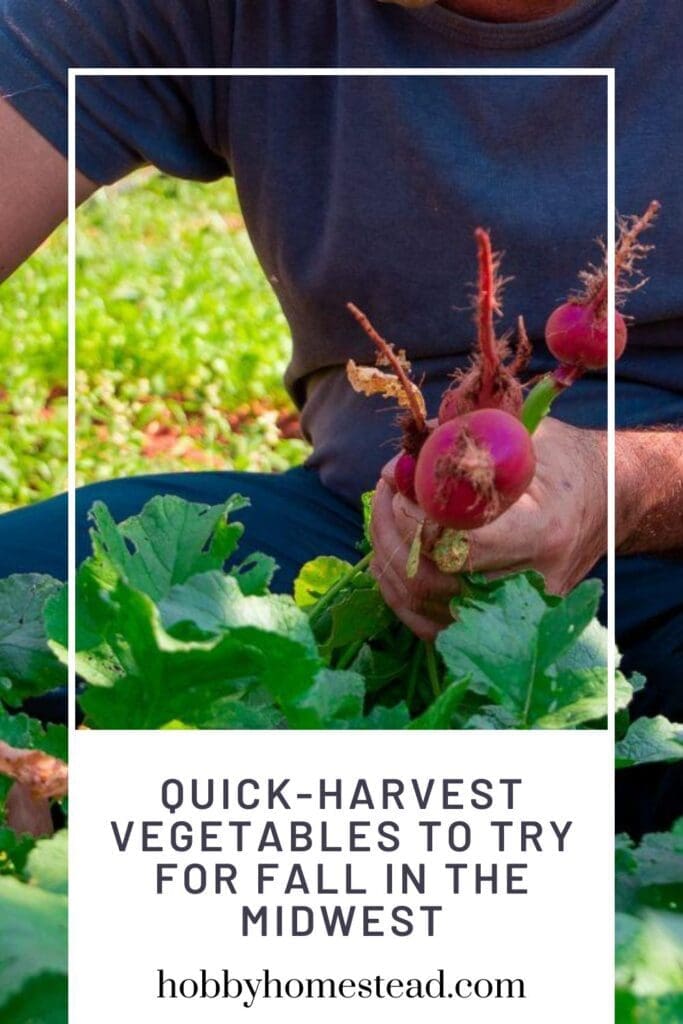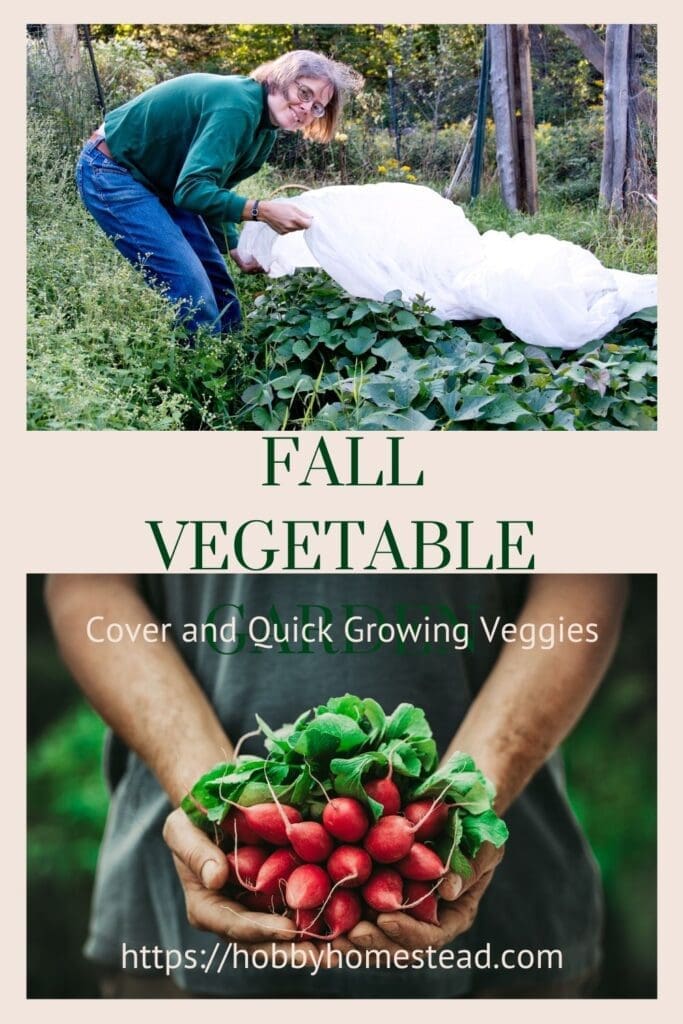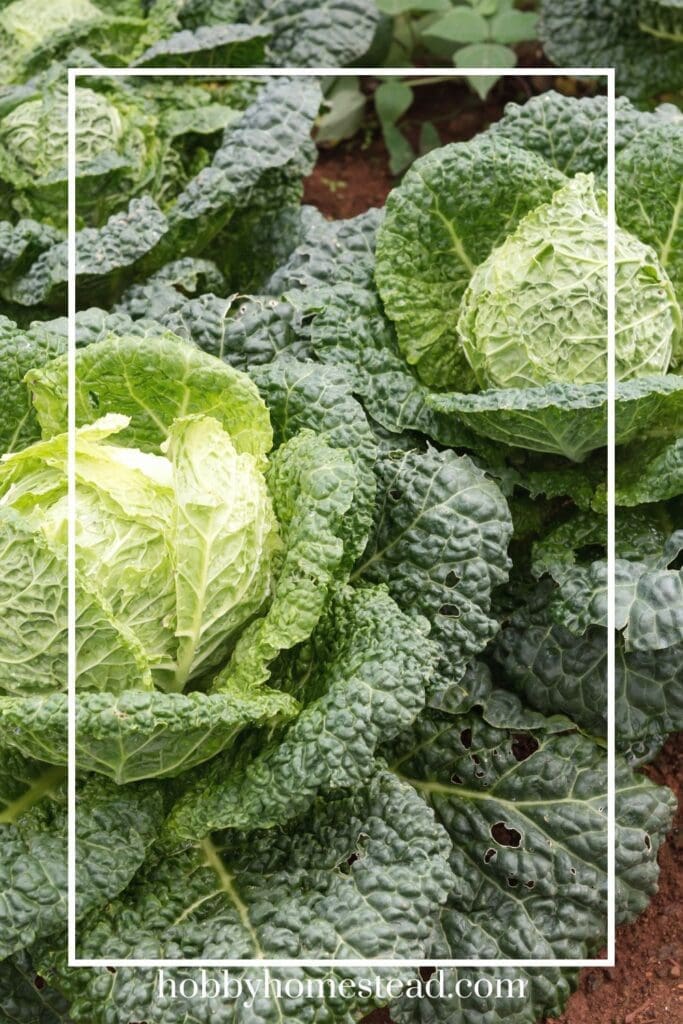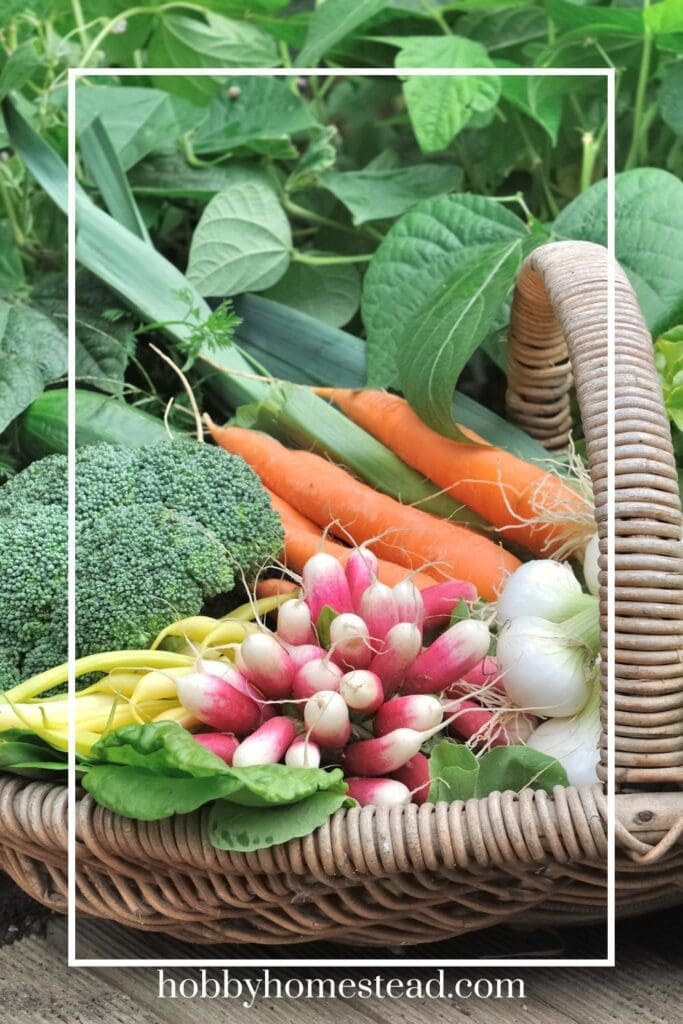Quick-Harvest Vegetables to Try for Fall in the Midwest to get a bountiful Autumn harvest. As summer’s heat fades, the fall months bring cooler temperatures, making it a great time to plan your fall vegetable garden in Wisconsin and neighboring areas like northern Illinois.
The crisp cool weather is perfect for growing cool-season crops that thrive in cooler soil and can handle the coming frosts.
Why Fall Planting Works Well
Despite common misconceptions, fall planting can be highly successful with the right planning and care. The soil stays warm well into the fall, providing optimal conditions for root development, allowing plants to grow strong.
Additionally, there’s typically less weed competition during this season, meaning your vegetables have better access to essential soil nutrients and moisture.
Many plants actually thrive in fall’s mild temperatures, giving you a productive garden in the cooler months and a head start for a vibrant garden come spring.
Late summer is an excellent time to get your hands in the soil and start planting fast-growing fall vegetables. Let’s explore some quick-harvest options and tips to ensure a bountiful autumn harvest.

Fall Vegetables That Thrive in Cool Weather
When planning your fall garden, it’s important to choose cool-season vegetables that can handle the cooler temperatures of the Midwest.
Many of these vegetables grow better in the fall months compared to the heat of summer, offering you higher yields and better quality produce. These cool-season crops can tolerate both light frost and, in some cases, even a hard frost, giving you plenty of flexibility for your fall harvest.
Here’s a list of some quick-harvest fall crops to consider.
Vegetables That Tolerate a Light Frost
- Leafy greens like mustard greens, leaf lettuce, and swiss chard thrive in cooler weather and will continue to grow after a light frost.
- Bok choy and green onions are quick-growing options that do well in cooler temperatures and can be harvested in as little as 30 days.
- Snap beans are another excellent choice for a fall planting if you get them in by early August or late July to give them time before the average first frost date.

Vegetables That Can Withstand a Hard Frost
For vegetables with strong frost tolerance, you can plant crops that will handle even freezing weather and cold temperatures.
- Brussels sprouts are a cool-weather crop that actually improve in flavor after a hard frost.
- Root crops like carrots, beets, and turnips can tolerate cold temperatures and continue growing into early winter.
- Kale and collard greens are among the hardiest cool-season vegetables, becoming sweeter as the weather cools.
These cool-season crops are not only excellent choices for your fall vegetable garden, but they also tend to have fewer pests compared to summer plantings, giving you a smoother growing season.
Quick-Growing Fall Vegetables
If you’re starting your fall planting in late August or even early September, don’t worry—there are still plenty of vegetable crops you can grow that will mature quickly. Here are some options that offer short harvest times.
- Radishes are ready to harvest within just 25-30 days, making them perfect for a late summer or early fall planting.
- Leaf lettuce and spinach are ideal for direct sowing into warm soil in early August or late July, and they can be harvested within a couple of weeks.
- Swiss chard and mustard greens are fast-growing leafy greens that will give you multiple harvests well into the early fall.
- Green onions or scallions can be ready in as little as 30-40 days and are perfect for succession planting if you want a steady supply through the fall months.
If you get your seeds into moist soil and ensure the soil moisture remains consistent during the cooler weather, these cool season vegetables will thrive in full sun or even light shade.

Best Practices for Fall Gardening in Wisconsin
Wisconsin’s fall gardening season offers many advantages.
The cool temperatures help extend the gardening season, allowing you to grow cool-weather crops without worrying about the scorching summer heat.
However, it’s important to pay attention to the average first frost date in your zip code and prepare for the possibility of an early frost by using cold frames or row covers to protect young plants.
Here are some tips to help you get started.
- Sow seeds directly into warm soil by early July to give your crops plenty of time to mature before the first frost.
- For warm-season crops like cherry tomatoes, you’ll want to plant in early spring or early July for the best results, but cool-weather crops like bok choy and snap beans can still thrive in the fall garden if planted in late July or early August.
- Make sure to improve the organic matter in your soil by adding compost or other amendments before planting. This will promote healthy seed germination and help maintain moist soil for your crops.
- Always check the back of your seed packets for specific harvest times and spacing requirements.

Local Resources for Fall Planting
Your local garden centers are great places to find fall planting supplies, available products, and expert advice tailored to the Midwest’s growing conditions. Many home garden enthusiasts also recommend starting earlier crops indoors to get a head start before transplanting outdoors in late summer.
If you’re looking for cool-season crops with the best bet for success, reach out to local growers or research varieties known to thrive in Wisconsin’s unique climate.
Fall gardening in the Midwest, especially in states like Wisconsin and Illinois, is a rewarding experience. With the right planning and cool-season crops, you can enjoy fresh produce well into the cooler months.
Whether you’re harvesting root vegetables like carrots and beets or leafy greens like swiss chard, the fall garden offers delicious, nutrient-packed vegetables that can be harvested in just a couple of weeks.
Take advantage of the fall planting season, sow seeds, and get ready for a bountiful autumn harvest.
References
Purdue University. The Fall Vegetable Garden.
Purdue University. Versatile Vegetables for Fall Gardening.


